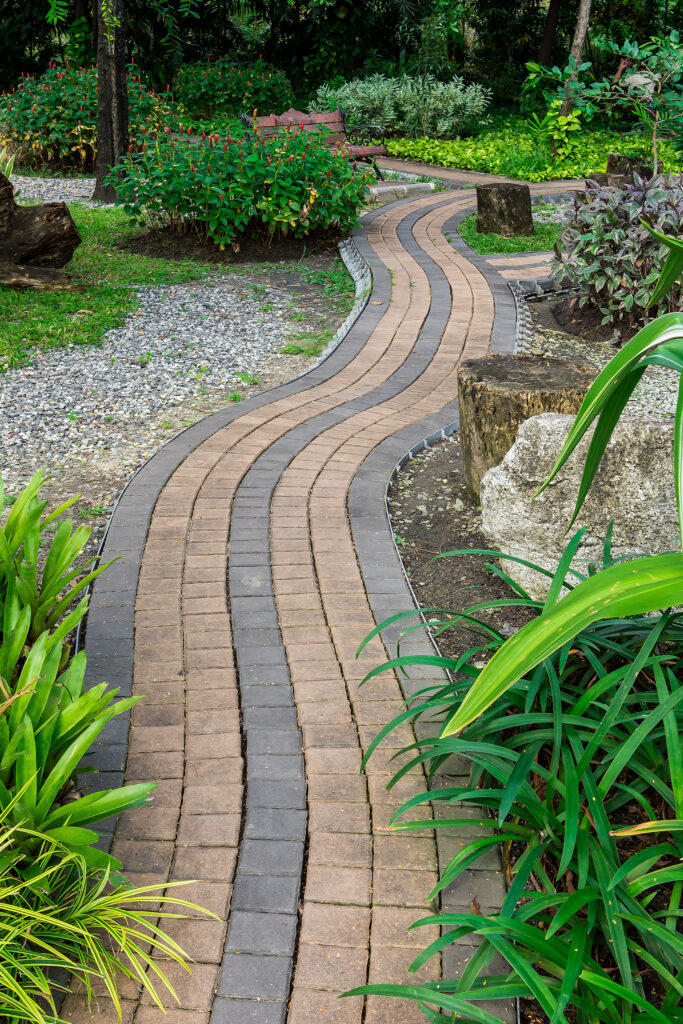Transform Your Outdoor Spaces with The Sodfather’s Expert Landscaping Services
Get Your Free Landscaping Quote TodayCustom Landscaping Solutions Crafted to Your Vision
Highlights of The Sodfather
At The Sodfather, our full‑service landscaping team brings a decade of expertise in hardscaping, turf installation, and garden design to every project. From precision‑graded patios and retaining walls to lush, low‑maintenance plantings, our landscaping services are engineered for longevity, curb appeal, and year‑round beauty.
- Complete Landscaping Solutions
- Expert Hardscaping Services
- Premium Sod Installation
- Locally Owned & Operated
- Warranty-Backed Workmanship
for residential and commercial properties
including patios, walkways, and retaining walls
including patios, walkways, and retaining walls
deeply rooted in Winnipeg’s communities
ensuring durability and long-term satisfaction
Request Your Free Landscaping Quote
Why Choose The Sodfather Landscaping & Hardscaping?
Choosing The Sodfather means partnering with experienced professionals who prioritize customer experience and project excellence. We deliver a seamless process from consultation to completion, using only the highest-quality materials and proven techniques suited to Winnipeg’s climate and soil conditions.

Custom Landscaping Solutions
Signs You Need Landscaping or Hardscaping Services
- Overgrown or patchy lawns
- Crumbling or unsafe hardscapes
- Poor drainage and erosion
- Outdated or neglected outdoor spaces
- Preparing for property upgrades or sales
An uneven, unhealthy lawn with bare spots, weeds, and drainage issues signals the need for professional sod installation and grading services.
Chipped pavers, shifting stones, or deteriorating retaining walls compromise safety and curb appeal and require expert repair or replacement.
Standing water, soil erosion, or sloped landscapes benefit from tailored hardscaping solutions such as French drains or retaining structures.
Transform aging patios, worn pathways, and uninviting yards into stylish, functional outdoor living areas with custom landscaping design.
Maximize property value and buyer appeal with professional landscaping and hardscaping enhancements that offer instant curb appeal.
Request Your Free Landscaping QuoteExpert Services
Our Process
Consultation & Site Assessment
We begin with an on-site consultation to understand your vision, evaluate conditions, and recommend solutions tailored to your needs and budget.
Learn moreDesign & Planning
Our designers create functional, aesthetic plans integrating landscaping, hardscaping, and drainage considerations.
Learn morePreparation & Groundwork
We prepare the site, handle grading, soil amendments, and ensure foundations and bases meet engineering standards.
Learn moreInstallation & Construction
Our skilled crews install sod, pavers, retaining walls, and other hardscape elements with precision, following best practices for long-term durability.
Learn moreFinal Walkthrough & Care Guide
We review the completed project with you and provide maintenance recommendations to protect your investment.
Learn moreWhy The Sodfather for Landscaping & Hardscaping?
The Sodfather combines old-school craftsmanship and modern landscaping techniques. Our focus on honest communication, fair pricing, and lasting results has earned us a reputation as Winnipeg’s premier outdoor space experts.
- Personalized service from a locally owned business
- Workmanship warranties on all projects
- Use of premium-grade, Manitoba-suited materials
- Hands-on project management from start to finish






Frequently Asked Questions About The Sodfather
We serve all neighborhoods in Winnipeg and surrounding communities.
Yes, The Sodfather specializes in complete outdoor services, combining softscapes like sod and plants with hardscapes such as patios, walkways, and walls.
Absolutely. We address drainage challenges with grading, French drains, and retaining structures to protect your landscape and property.
Most residential sod installation projects are completed in 1-2 days, depending on size and site conditions.
We offer landscape design services that ensure every element works together for beauty, function, and sustainability.
Get your Custom Landscaping Quote
Lets Get Started
Call us today (204)-999-9951
troy@thesodfather.ca



